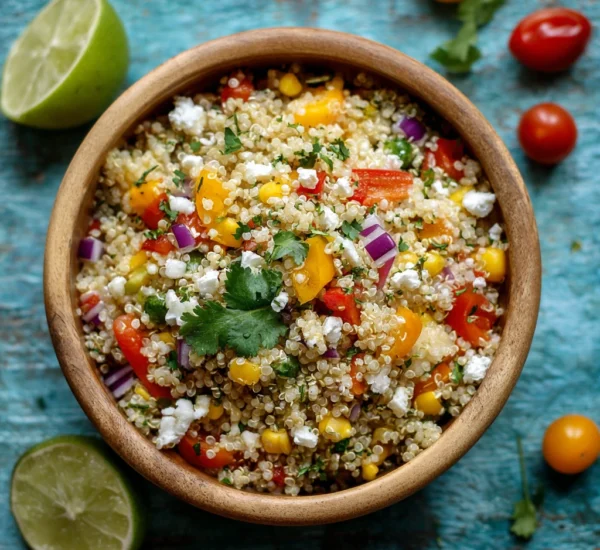Spaghetti Aglio e Olio: A Garlic Lover’s Dream
Spaghetti Aglio e Olio, meaning “spaghetti with garlic and oil,” is a classic Italian pasta dish known for its simplicity and bold flavor. With just a handful of ingredients – spaghetti, garlic, olive oil, red pepper flakes, and parsley – it delivers an incredibly satisfying and quick meal. This article will guide you through everything you need to know to create the perfect Spaghetti Aglio e Olio, from ingredient selection to variations and serving suggestions.
The Magic of Simplicity: Essential Ingredients
The beauty of Spaghetti Aglio e Olio lies in its minimalist approach. However, this also means that the quality of each ingredient is crucial.
The Pasta: Spaghetti’s the Star
While other pasta shapes might work in a pinch, spaghetti is the traditional and best choice for Aglio e Olio. Its long, thin strands perfectly complement the garlic-infused oil, allowing it to coat every bite. Look for a good quality dried spaghetti made from durum wheat semolina. Bronze-die pasta is preferred for its rough texture, which helps the sauce cling better. Avoid overcooking the pasta; it should be cooked al dente – firm to the bite. Remember to reserve some pasta water, as it’s essential for creating a creamy, emulsified sauce.
Garlic: The Heart and Soul
Garlic is, without a doubt, the most important ingredient in this dish. Use fresh garlic cloves, not pre-minced garlic, for the best flavor. The amount of garlic you use will depend on your personal preference, but a generous amount – typically 4-6 cloves per serving – is recommended. Finely slice the garlic rather than mincing it, as this allows it to cook more evenly and release its flavor into the oil. Be careful not to burn the garlic, as it will turn bitter and ruin the dish. Low and slow is the key to perfectly golden, fragrant garlic.
Olive Oil: The Foundation of Flavor
Extra virgin olive oil is the ideal choice for Aglio e Olio. Its rich, fruity flavor adds depth and complexity to the dish. Choose a high-quality olive oil that you enjoy the taste of on its own. The oil serves as both a cooking medium and a key component of the sauce, so its flavor is paramount. Don’t be shy with the olive oil; you want enough to generously coat the pasta and create a luscious sauce.
Red Pepper Flakes: A Touch of Heat
Red pepper flakes provide a crucial element of heat to balance the richness of the garlic and olive oil. The amount you use will depend on your tolerance for spice. Start with a small pinch and add more to taste. For a more intense flavor, you can lightly toast the red pepper flakes in the olive oil before adding the garlic.
Parsley: A Fresh Finish
Fresh parsley adds a bright, herbaceous note to the dish, balancing the richness of the garlic and oil. Italian flat-leaf parsley is the preferred variety, as it has a more robust flavor than curly parsley. Chop the parsley finely and add it at the end of cooking, just before serving.
Salt and Pepper: Seasoning Essentials
Don’t underestimate the importance of salt and pepper in Aglio e Olio. Salt is crucial for seasoning the pasta water and the finished dish. Use kosher salt or sea salt for the best flavor. Freshly ground black pepper adds a touch of spice and complexity. Taste and adjust the seasoning as needed.
Mastering the Technique: A Step-by-Step Guide
While the ingredients are simple, the technique is key to creating a truly exceptional Spaghetti Aglio e Olio.
1. Cook the Pasta: Bring a large pot of salted water to a boil. Add the spaghetti and cook al dente, according to package directions. Reserve about 1 cup of pasta water before draining.
2. Prepare the Garlic and Oil: While the pasta is cooking, heat the olive oil in a large skillet over medium-low heat. Add the sliced garlic and red pepper flakes. Cook, stirring frequently, until the garlic is golden brown and fragrant, about 5-7 minutes. Be careful not to burn the garlic.
3. Combine and Emulsify: Add a ladleful of the reserved pasta water to the skillet with the garlic and oil. Bring to a simmer, then add the drained spaghetti. Toss the pasta vigorously to coat it in the sauce. Add more pasta water as needed to create a creamy, emulsified sauce.
4. Finish and Serve: Remove the skillet from the heat and stir in the chopped parsley. Season with salt and pepper to taste. Serve immediately, garnished with extra parsley and a drizzle of olive oil.
Pro Tip: The Importance of Emulsification
Emulsification is the key to a creamy, non-greasy Aglio e Olio. The starch in the pasta water helps to bind the oil and water together, creating a smooth, velvety sauce that coats the pasta perfectly. Tossing the pasta vigorously while adding the pasta water helps to promote emulsification.
Avoiding Common Mistakes
- Burning the garlic: This is the most common mistake. Cook the garlic over low heat and watch it carefully.
- Using too much oil: While olive oil is essential, using too much can make the dish greasy. Start with a generous amount and add more as needed.
- Overcooking the pasta: Overcooked pasta will be mushy and won’t hold the sauce well.
- Not seasoning properly: Salt and pepper are crucial for bringing out the flavors of the other ingredients.
Variations and Additions: Expanding the Flavor Profile
While the classic recipe is delicious on its own, there are many ways to customize Spaghetti Aglio e Olio to suit your personal preferences.
Seafood Sensations
Adding seafood can elevate this simple dish to a more substantial meal. Shrimp, clams, or mussels are all excellent additions. Sauté the seafood in the olive oil with the garlic and red pepper flakes before adding the pasta.
Vegetable Ventures
Adding vegetables can add nutrients and texture to the dish. Broccoli, spinach, or zucchini are all good choices. Sauté the vegetables in the olive oil with the garlic before adding the pasta.
Breadcrumb Boost
Toasted breadcrumbs add a crunchy texture and nutty flavor to Aglio e Olio. Toast breadcrumbs in a dry skillet until golden brown, then sprinkle them over the pasta before serving. Panko breadcrumbs work particularly well.
Cheese Please?
While not traditional, some people enjoy adding grated Parmesan cheese or Pecorino Romano cheese to their Aglio e Olio. If you choose to add cheese, use freshly grated cheese and add it at the end, just before serving.
Lemon Zest Zing
A touch of lemon zest can add a bright, citrusy note to the dish. Grate the lemon zest over the pasta just before serving.
Serving Suggestions and Pairing Perfection
Spaghetti Aglio e Olio is a versatile dish that can be served as a light lunch, a quick weeknight dinner, or a side dish.
Perfect Pairings
Aglio e Olio pairs well with a variety of wines. A crisp, dry white wine, such as Pinot Grigio or Sauvignon Blanc, is a classic choice. For a red wine pairing, choose a light-bodied, fruity red, such as Pinot Noir or Beaujolais.
Serving Suggestions
- Serve Aglio e Olio as a starter or side dish alongside grilled fish or chicken.
- Serve it as a light lunch with a side salad.
- Serve it as a quick and easy weeknight dinner.
- Garnish with extra parsley, a drizzle of olive oil, and a sprinkle of red pepper flakes.
Make it a Meal
Add a side of crusty bread to soak up the delicious garlic-infused oil. A simple salad with a light vinaigrette dressing also complements the richness of the pasta.
Frequently Asked Questions
- Can I use pre-minced garlic? While you can, fresh garlic is highly recommended for the best flavor. Pre-minced garlic often lacks the intensity and aroma of fresh garlic.
- Can I make this dish ahead of time? Aglio e Olio is best served immediately. The pasta can become sticky and the sauce can lose its emulsification if it sits for too long.
- How do I store leftovers? Store leftovers in an airtight container in the refrigerator for up to 2 days. Reheat gently in a skillet over low heat, adding a little water if needed to loosen the sauce.
- Can I use different types of pasta? While spaghetti is the traditional choice, other long pasta shapes like linguine or fettuccine can also be used.
- Is Aglio e Olio vegan? Yes, the basic recipe is vegan. However, be sure to check the ingredients of any pre-made pasta to ensure it doesn’t contain eggs.
- How do I prevent the garlic from burning? Cook the garlic over low heat and stir frequently. If the garlic starts to brown too quickly, remove the skillet from the heat for a few seconds.
- Can I add protein to this dish? Yes, grilled chicken, shrimp, or tofu are all great additions.
- What is the difference between Aglio e Olio and other garlic pasta dishes? Aglio e Olio is distinguished by its simplicity and reliance on just a few high-quality ingredients. It doesn’t typically include cream, tomatoes, or other common pasta sauce ingredients.
- How much salt should I use in the pasta water? A good rule of thumb is to use about 1 tablespoon of salt per gallon of water. The pasta water should be as salty as the sea.
- Why is pasta water important? The starch in the pasta water helps to emulsify the sauce, creating a creamy texture.



